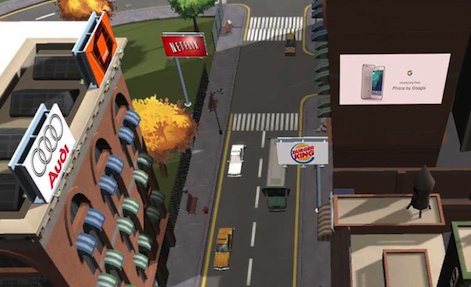We ask our industry panel - the brightest and sharpest VR professionals from around the world - one question about the XR industry, business, technology or trending stories every week.
Question: We hear time and again that VR is the new wild west and that there’s gold in them there hills – but it will take a long walk through the desert to get there.
How can smaller studios monetise their XR content now, so they make it to the promised land? Is there one single monetisation method you think will be successful for VR, AR or MR, or must indies explore multiple strands of revenue to ensure a Return On Investment – let alone a profit? Where should they look?
It will be a bumpy ride for smaller studios with a lot of sweat and tears, but the studios that survive will play a leading role in the VR industry of the future.David Gattig
David Gattig, CEO and Co-Founder at Avrlon VR Studio
“As I am running one of these smaller VR studios, I see three good options for small XR studios:
1) “Pay to play - there are XR game studios that have managed to reel in a Return on Investment with their VR experiences. To add, it is more important than ever before for small VR studios to be lean, to iterate quickly and to focus on the idea validation - to ensure there are enough people willing to spend money on your VR product.
2) “Subscription for Arcades - More and more VR arcades are approaching us to buy a monthly subscription for our upcoming multiplayer VR game, Elemental Combat. VR Arcades are searching for interesting new multiplayer experiences for their clients. There are enough VR arcades in the world to make it a viable business model for smaller businesses.
3) “Contract development work - Game studios can benefit from their game development experience and UX know-how. In the industry, XR is still a big topic and B2B is a valid (and by times lucrative) business model for smaller studios to make it through the desert to the promised land. Businesses still want to profit from the XR hype to attract customers and have the budget to pay, which lends some security for developers in contrast to the fickle nature of the B2C market.
“Finally, it will be a bumpy ride for smaller studios with a lot of sweat and tears, but the studios that survive will play a leading role in the VR industry of the future.”

We’re in a new Atari Age of experimentation. Just don’t expect huge quarterly returns.Jonathan Wagstaff
Jonathan Wagstaff, Group Business Intelligence Manager at Exertis
“I suspect the team at Impulse (makers of Farpoint) would probably refute the suggestion that there is no positive economic reason for developing VR games, as would many other developers I’ve spoken to at trade shows in the past six months who quietly reported modest revenues thus enabling the production of bigger and more ambitious projects. However, as Parisi rightly pointed out in his recent interview, VR is on a steady journey of growth, leading to mass adoption.
“Arguably, this is a fantastic time for developers, particularly smaller houses, to get involved in the industry as much of the work being done now is going to set the standards for decades to come. Moreover, those studios working in the space now are building vital intellectual capital, which will be vital as the medium matures. All it takes is one seminal title – a VR Super Mario Bros – to hit the market for one developer to be immortalised.
“Moreover, with generous funds coming from Oculus/Facebook the risk to developers is reduced. I’m personally loving the exposure that some VR titles are getting right now - titles which would probably be lost in the sea of major AAA releases if they were conventional games. As I’ve said previously, it feels like we’re in a new Atari Age of experimentation and artifice. Just don’t expect huge quarterly returns.”

VR developers are architects, creating ‘virtual estate’ that can be monetised.Samuel Huber
“As of today, only a handful of VR studios have been able to generate substantial revenue, let alone turn a profit, because the market adoption is minimal. At this stage, paid content is a good strategy because early adopters are amongst the 2% or 3% of users who pay for content. The other business models – freemium, advertising etc – only work at scale. So right now, developers looking to make money should sell their content.
“However, this is a business model that doesn’t scale well – most people do not pay for content. To monetise the long tail, we see the biggest opportunities happening in-app, immersed into the experience.
“In a way, VR developers are architects, creating ‘virtual estate’ (commonly called inventory) that can be monetised. This inventory, which is areas/spaces in the content, can then be sold to advertisers, but also host relevant e-commerce sales, or support app-transactions.
“We encourage developers to create valuable inventory to create simple experiences (watch ads, buy things, transact) for users to experience directly within the VR content, and that they can profit from.”

I suspect that in order to capitalise on the growth of mobile VR and AR, it's going to come down to advertising.Dave Bradley
Dave Bradley, COO at Steel Media
“When it comes to high-end non-mobile VR, the gamers who can afford the PC and the HMD are likely affluent and so charging them full price for games is possible. And people are used to that model on PC, thanks to Steam, for instance.
“But for lower-end platforms like mobile, we have to be looking at free-to-play models and that means figuring out how to monetise those. Mobile offers some great opportunities to get into VR internationally. China, for instance, has a huge number of Cardboards and standalone mobile-based headsets in circulation. That's a market worth approaching.
“But how to pay for it? Strong meta games that encourage in-app purchases are an obvious option, but that means you need to consider your game an ongoing service; updates and live ops are going to be something you have to invest in. For a smaller studio, that's not always possible – you'll need to get straight onto your next project.
“So I suspect that in order to capitalise on the growth of mobile VR and AR, especially in games intended for release around the world where in-app credit card purchases are less common, and especially for small companies that don't want to run an extensive service operation, it's going to come down to advertising. Ads placed inside the virtual world are less intrusive than rewarded videos or interstitial-type flat ads that interrupt the game. I'm intrigued by The VR & AR Pledge for non-intrusive ads that Advir is advocating for (with the backing of Yahoo! they could be on to something).
“A final note: as with all game sectors, I would also say that until they have a hit on their hands, smaller studios should never give up the day job of doing development work for hire - it's a perfectly respectable way to keep the lights on!”

It’s vital for the platform holders to continue to support content creators with funds that will help grow the industry.Brynley Gibson
Brynley Gibson, Head of Studios at Curve Digital
“Many VR experiences getting built right now have KPIs other than profit from direct sales. This work for hire in say, marketing, training or education, in a multitude of verticals can pay well and although a highly competitive space, it’s worth a shot. The profits from these projects can be used to fund your dream project – or, of course, mean that you can afford to eat.
“If you’re looking to make a game or app looking to make returns on sales then you should approach it with a good business head. Do a P&L, don't spend too much, have realistic sales expectation, go broad on platforms and look into getting grants or publisher funding to get you over the line.
“There are breakout hits, but that shouldn't change sensible best practice, as it’s highly unlikely to happen. If it does, then fantastic - lots of profit, trebles all round.
"Because of the small user base, it’s vital for the platform holders to continue to support content creators with funds that will help grow the industry.”













